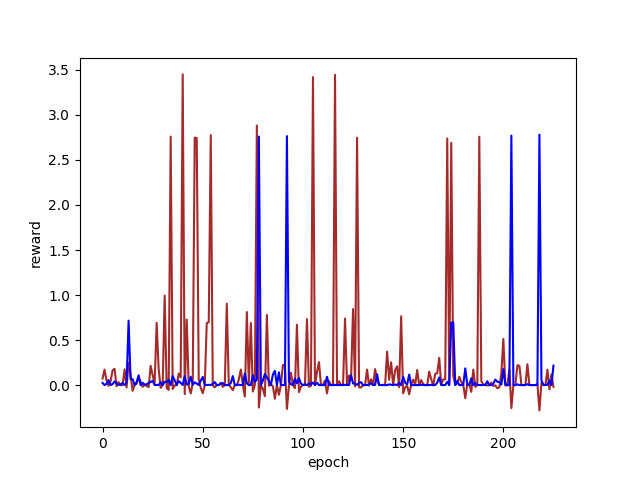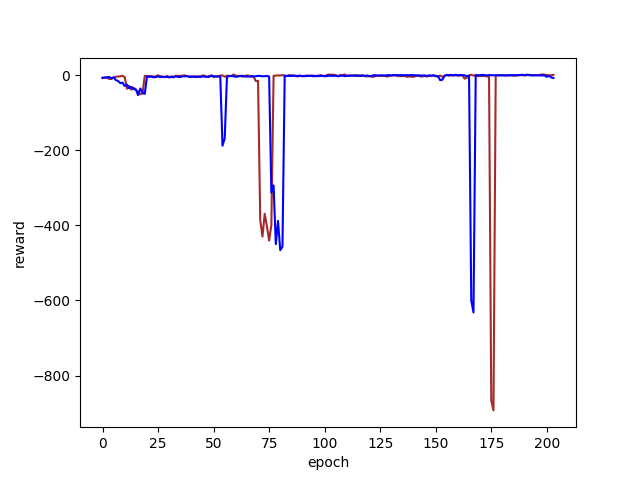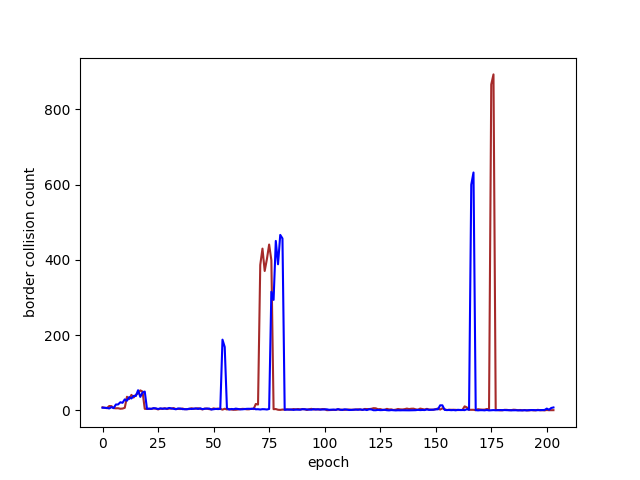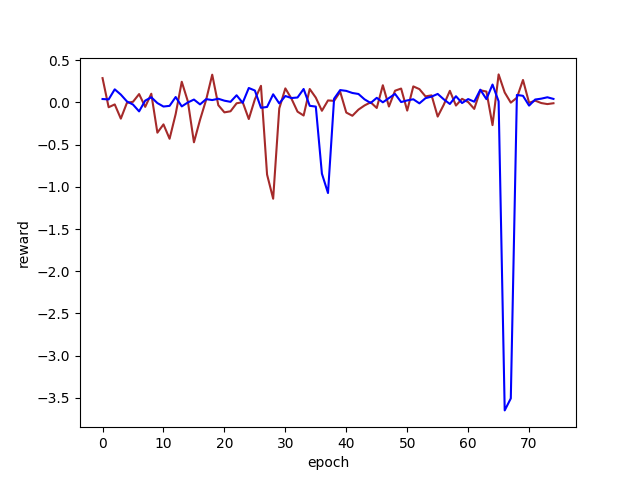Cow Simulator
usage
In order to run the application install the dependencies and type:
python3 deepcow/run.py play # to let the best 2 models trained by train_cow or train_wolf play against each other
python3 deepcow/run.py train_cow # to train the cow
python3 deepcow/run.py train_wolf # to train the wolf
python3 deepcow/run.py train_both # to train both at the same time
in your terminal.
References
scientific papers
Proximal Policy Optimization Algorithms
Overcoming catastrophic forgetting in neural networks
articles/tutorials that were used in preparation
Youtube Playlist I got my inspiration from
Multi-agent actor-critic for mixed cooperative-competitive environments
Emergent Tool Use From Multi-Agent Autocurricula
When Worlds Collide: Simulating Circle-Circle Collisions
Quick Tip: Use Quadtrees to Detect Likely Collisions in 2D Space
Topic
This project includes a Reinforcement Learning strategy in a dynamic, multi-agent environment.
Type
The type of this project is Bring your own data for reinforcement learning projects, because it provides a new environment for reinforcement learning strategies. Additionally it includes basic neural networks for every actor and learning algorithms for them.
Summary
Description
This project consists of a simulation that simulates a partially observable, multi-agent, dynamic, continuous in space, discrete in time and partly unknown (missing knowledge about laws of physics) environment.
There are two actors that can interact consciously with the environment: a cow and wolf. Additionally, there is another entity called grass. Each entity has a certain energy level. The cow gets energy by touching grass, the wolf by touching cows. Each entity loses energy by touching its counterpart or moving around. The goal of each actor is to obtain as much energy as possible. If the energy level of the cow or the grass drops below zero the environment is reset. An actor perceives its environment, by sending out rays with a limited reach. The rays return the color of the actor they intersect with, black if they intersected with the game border or white if they did not intersect with anything. The next figure shows a visualisation of the rays, the cow (brown), the wolf (blue), the grass (red) and a visualisation of the rays.
The little black circles represent their head. To implement the actors' AI deep Q learning as described in the lecture was used, however it does not achieve wanted results as of yet.
Dataset
There is no real dataset. The project implements the environment and a deep q learning algorithm for the actors and gives an visualisation of the state of the world.
Error metric
The performance measure of each actor is the reward (the energy gain) of the agent. The first environment and simple dqn agents did not behave reasonable. So their reward oscillated.
In oder to get better results a negative reward was added if an agent hits the border. Additionally the agents actions were changed to move the agent relative to its direction instead of relative to the screen.
As the border collision count is interesting as well, it was also captured and plotted. The goal was to have an average collision count of 5. As seen in the following plot both agents learnt to avoid borders in certain epochs. The exploration rate goes down with each epoch, so agents rely more on their neuronal network in latter epochs.
Last but not least a more complicated neural network was trained for approximating the q function. The border collision was not penalized anymore.
My personal goal was to have an constant reward of 0.3 (an agent can only obtain 1.0 rewards per game). However this was too difficult for the deep q network I trained. This can also be due to not enough training.
Documentation
The entry point is the main.py file. Start by installing the dependencies listed in .circleci/dependencies.txt and running the main.py file.
Work-Breakdown structure
| Individual Task | Time estimate | Time used |
|---|---|---|
| research topic and first draft | 5h | 8h |
| building environment | 10h | 14h |
| setting up cuda, cudnn... on manjaro | 20m | 21h |
| designing and building an appropriate network | 20h | 25h |
| fine-tuning that network | 10h | 12h |
| building an application to present the results | 5h | 4h |
| writing the final report | 10h | 3h |
| preparing the presentation of the project | 5h | 1h |





